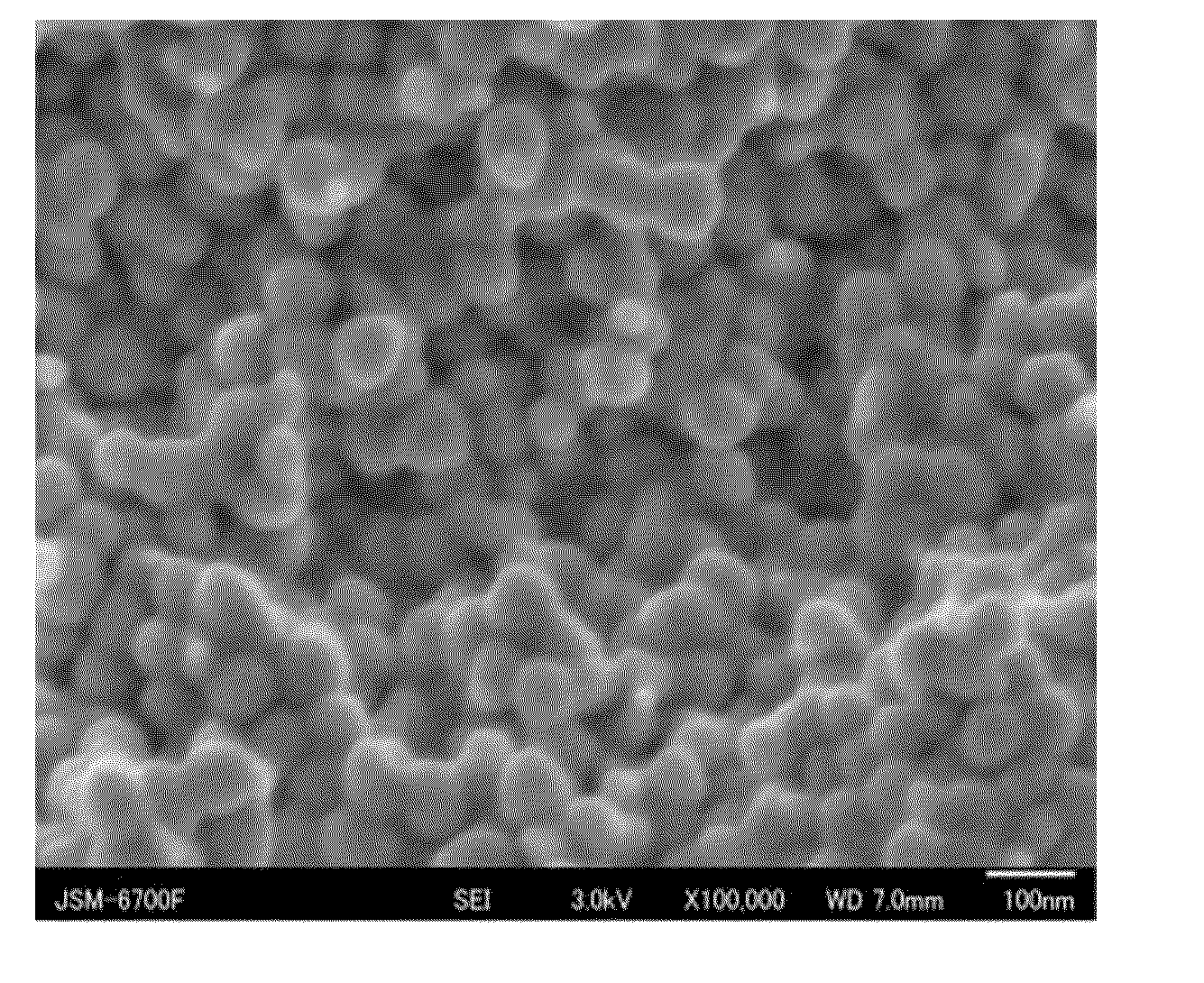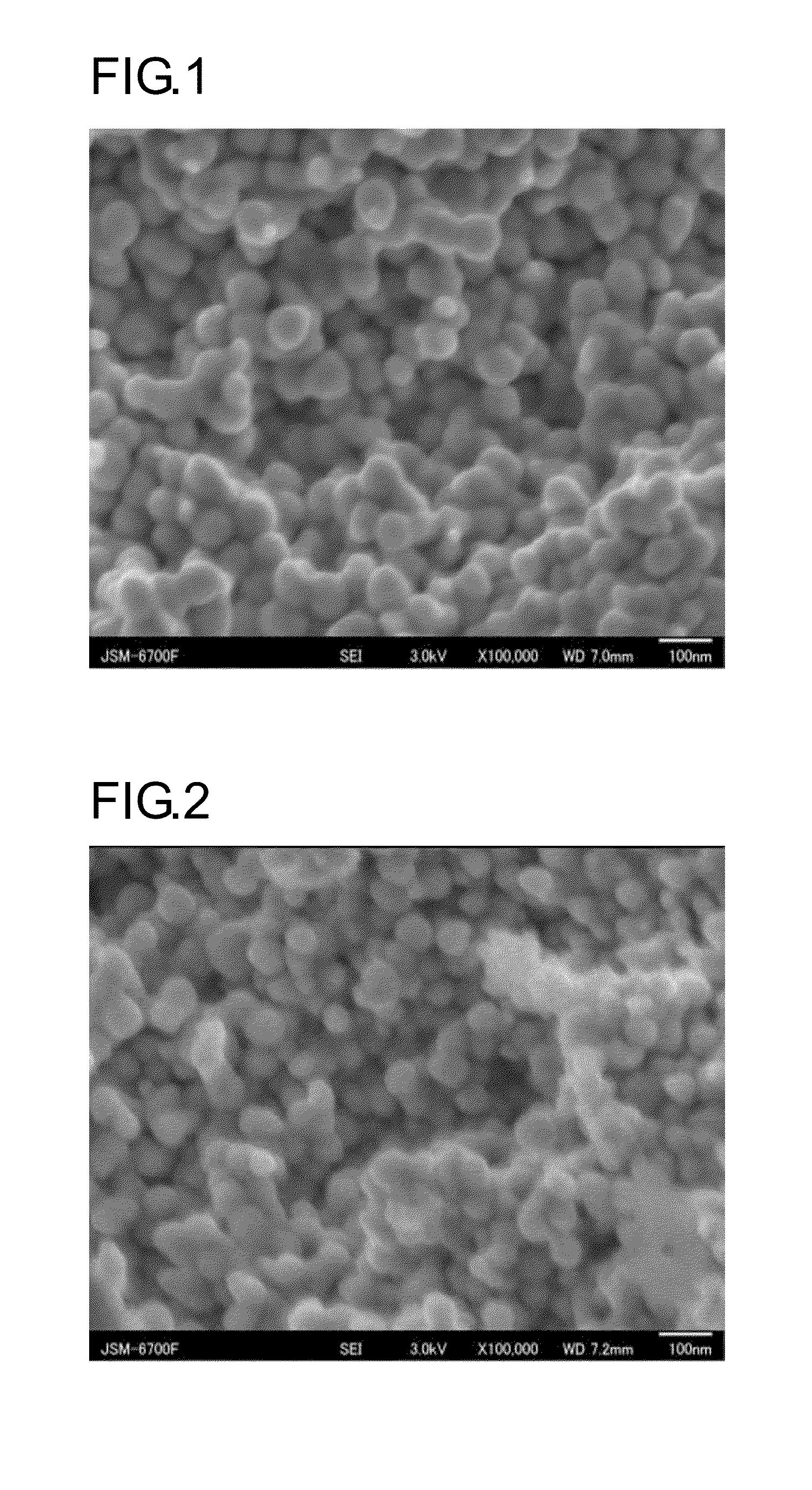Method for producing silver nanoparticles, silver nanoparticles, and silver coating composition
a technology of silver nanoparticles and coating compositions, which is applied in the direction of electrically conductive paints, conductors, and paints, etc., can solve the problems of low resistance value, inability to achieve low resistance value, and interfere with the sintering of silver nanoparticles, so as to promote complex formation, high ability to coordinate to silver, and high polarity
- Summary
- Abstract
- Description
- Claims
- Application Information
AI Technical Summary
Benefits of technology
Problems solved by technology
Method used
Image
Examples
example 1
Preparation of Silver Nano-Particles
[0108]10.84 g (150 mmol) of n-butylamine and 3.00 g (30 mmol) of n-hexylamine were added to a 50-mL flask and stirred at a room temperature to prepare a homogeneous amine mixture solution.
[0109]3.04 g (10 mmol) of silver oxalate was added to the prepared mixture solution and stirred at a room temperature to convert silver oxalate to a viscous white substance. The stirring was terminated when such conversion was seemingly completed. In this way, a white silver oxalate-amine complex was formed.
[0110]Then, the obtained reaction mixture was heated to 85° C. to 90° C. with stirring. After the start of the heating with stirring, the white silver oxalate-amine complex was gradually decomposed so that the color of the reaction mixture was turned to brown. After 2 hours from the start of the heating with stirring, a suspension was obtained in which silver nano-particles were suspended in the amine mixture solution.
[0111]Then, 10 mL of methanol was added to...
example 2
[0122]A silver nanoparticle-containing paste was prepared in the same manner as in Example 1 except that 3.00 g (30 mmol) of n-hexylamine was changed to 3.88 g (30 mmol) of n-octylamine in the composition of the amine mixture solution. Then, coating films were formed and calcined in the same manner as in Example 1.
[1] Calcining conditions: 80° C., 30 minutes
[0123]Film thickness after calcining: 6.38 μm
[0124]Specific resistance value of calcined film: 6.23E-05 Ωcm
[2] Calcining conditions: 80° C., 60 minutes
[0125]Film thickness after calcining: 4.70 μm
[0126]Specific resistance value of calcined film: 2.21E-05 Ωcm
[3] Calcining conditions: 120° C., 15 minutes
[0127]Film thickness after calcining: 4.73 μm
[0128]Specific resistance value of calcined film: 8.34E-06 Ωcm
PUM
| Property | Measurement | Unit |
|---|---|---|
| Dimensionless property | aaaaa | aaaaa |
| Electrical conductivity | aaaaa | aaaaa |
| Electrical conductor | aaaaa | aaaaa |
Abstract
Description
Claims
Application Information
 Login to View More
Login to View More - R&D
- Intellectual Property
- Life Sciences
- Materials
- Tech Scout
- Unparalleled Data Quality
- Higher Quality Content
- 60% Fewer Hallucinations
Browse by: Latest US Patents, China's latest patents, Technical Efficacy Thesaurus, Application Domain, Technology Topic, Popular Technical Reports.
© 2025 PatSnap. All rights reserved.Legal|Privacy policy|Modern Slavery Act Transparency Statement|Sitemap|About US| Contact US: help@patsnap.com


